The latest news from Nepal’s Department of Tourism reveals that only one foreign climber is gearing up to take on the formidable south side of Cho Oyu. This doesn’t imply they’ll be going solo; it simply means they’re the sole non-Nepali on the list, as locals are exempt from paying the same fees.
On the Chinese side, the regular route up Cho Oyu remains closed this season. While it’s still feasible to climb from the Nepal side, it’s no walk in the park. Only a select few have ever conquered the challenging ridges and faces. Nepali teams have been endeavoring to establish a safer route for commercial climbs, but they haven’t succeeded thus far. Last fall, a Russian team came tantalizingly close to completing a long ridge route but fell short of reaching the summit in time.
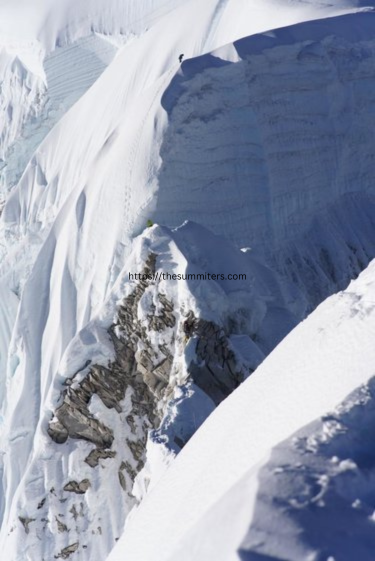
The permit list also mentions a few solo foreign climbers who are embarking on expeditions to Nepal’s 6,000-meter peaks. Some of these peaks, such as Putha Hiunchuli, Saribung, and Tengkoma, are less frequented yet pose tougher challenges than the usual trekking spots.
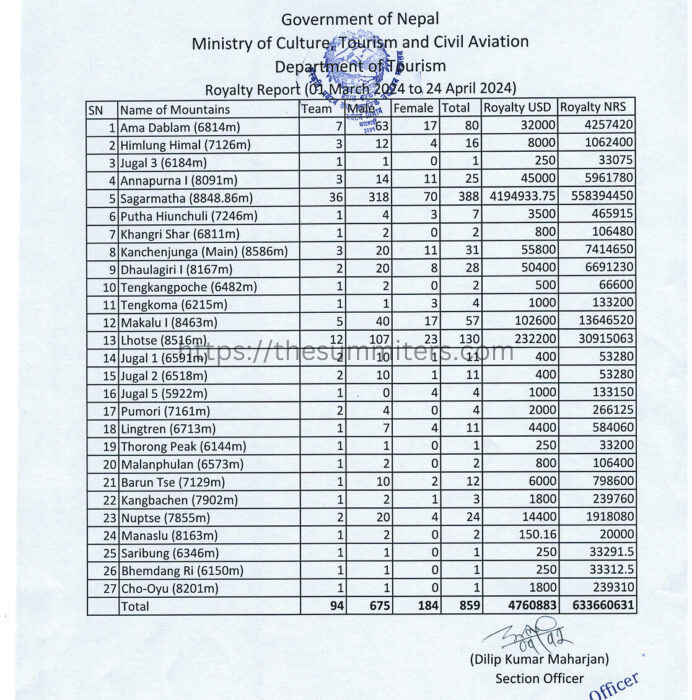
For those inclined towards more technical climbing, there are enticing routes like Bhemdang Ri, Malanphulan, and Tengkampoche. These peaks in the Langtang and Khumbu regions are catching the attention of elite climbers. Updates are also anticipated soon regarding Korean teams taking on Khangri Shar and the Jugals.
The Northern Route of Everest
With China pushing back the opening of Everest until May 7 this week, some teams, including Arnold Coster’s, decided to call it quits and switch to the Southern Route.
Coster shared his concerns, stating, “I believe waiting any longer for the Northern Route poses too much risk. While there have been years when climbers summited late, I’ve also witnessed seasons abruptly ending with the onset of the monsoon.”
On the other hand, Climbalaya remains committed to its plans for the Northern Route, preparing Base Camp to welcome its five clients.
The South Side of Everest
Climbers on Everest and Lhotse have already begun navigating through the Khumbu Icefall. Some have successfully passed through and are now stationed at Camps 1 and 2.
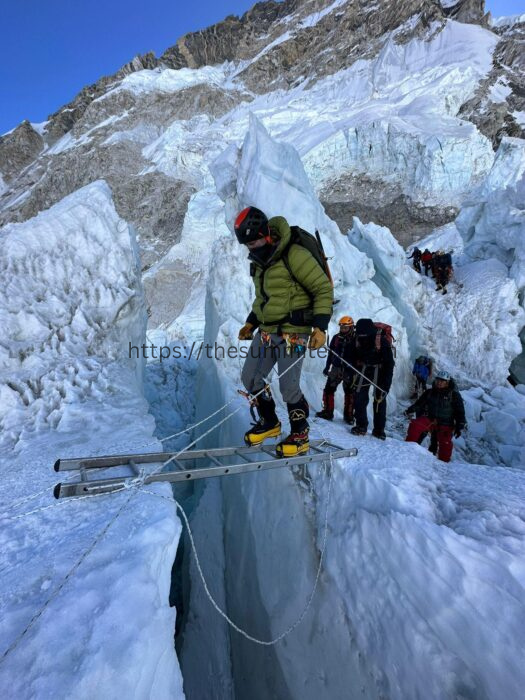
Mike Hamill, representing Climbing the Seven Summits, elaborated, “This time around, the Icefall route is longer and more winding than usual. There are sections where towering ice formations hang over the path, but that’s pretty standard. Part of our team is currently situated at Camp 1, while others have returned to Base Camp. Although the Icefall is getting busier, it’s not overly congested. The main bottleneck tends to occur at the final vertical ice wall.”
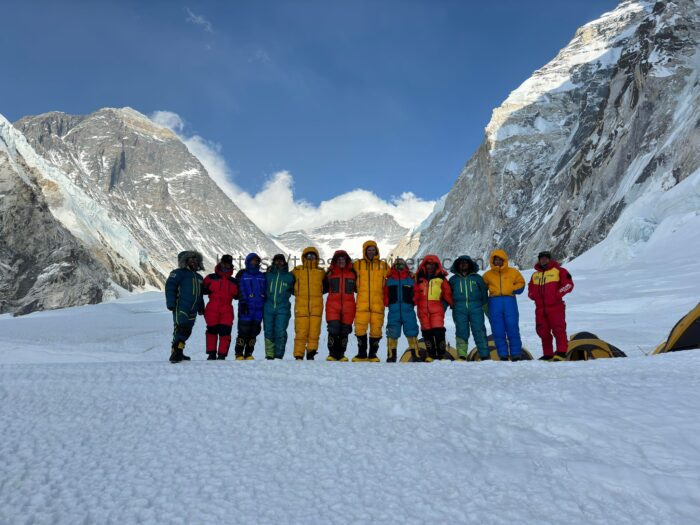
Mount Everest Climbers Without Oxygen
Today, Hugo Ayaviri from Bolivia planned to make his way up to Camp 2. Meanwhile, others like Norrdine Nouar and Valery Babanov have been acclimatizing at Pumori’s high camp (5,700m). Frank Locke of Norway recently conquered Lobuche East, and Tunc Findik from Turkey has been busy scaling Island Peak and is now taking on Ama Dablam.
However, the delay in opening the route has impacted the entire expedition. Camp 2 should be bustling with activity by now, but it’s still under construction. “Our Camp 2 should be ready in a day or two, but we’re among the first teams,” noted Hamill.
The Second Biggest Hub in Khumbu Valley
With the peak season fast approaching, the latest count reveals a staggering 388 foreign climbers holding permits for Everest. This surpasses last year’s figures for the same period, and the numbers might swell further as some teams switch over from the North Side.
Furthermore, a considerable number of climbers are scattered across the nearby peaks. Some, like ultrarunners Tyler Andrews and Chris Fisher, are currently up on Pumori, acclimatizing and honing their skills for the Everest ascent. Lhotse has already issued 130 permits, with some aiming for the challenging Everest-Lhotse double, while others are focusing solely on conquering Lhotse, including several opting to climb without oxygen.
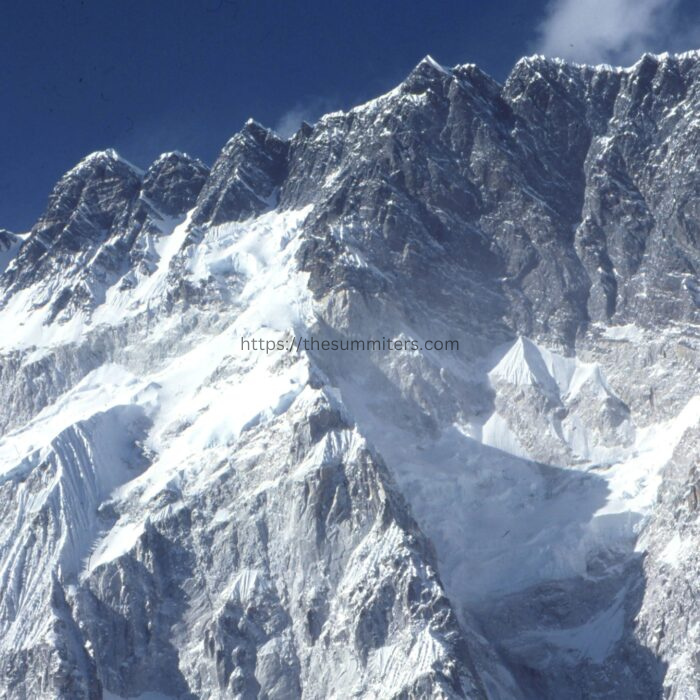
Over on Nuptse, Madison Mountaineering is gearing up to set ropes and lead a team to the summit. While the peak has issued 24 permits, some climbers are obtaining Nuptse permits solely to reach Camp 2 on Everest, without any intention of ascending further. Often, friends of Everest climbers venture to Camp 2 to provide invaluable support. For them, a Nuptse permit serves as a more cost-effective alternative to an Everest one.
In a surprising turn of events, two teams comprising a total of 11 climbers are even venturing to the seldom-visited Lingtren. Last year, Simone Moro made an attempt on Lingtren.
With all these climbers converging at Everest Base Camp at the onset of May, it’s poised to become the second largest “town” in the Khumbu Valley, trailing only behind Namche Bazaar. However, obtaining current population data for Namche proves challenging. While Wikipedia cites 1,647 people in 2001, Emelie Forsberg, Kilian Jornet’s wife, suggested in a blog post last year that the population might have swelled to as many as 5,000 residents.

As it stands, the local authorities’ efforts to reduce the size of Everest Base Camp may have been futile.
Updates from Other 8,000-Meter Peaks
“We’ve reached Camp 1, and tomorrow we’re pushing on to Camp 2 where we’ll spend the night,” shared Anna Tybor and Paul Lafaille from Dhaulagiri. “Given the forecasted strong winds in the days ahead, we’ve decided to seize the current weather window and kickstart our acclimatization process.”
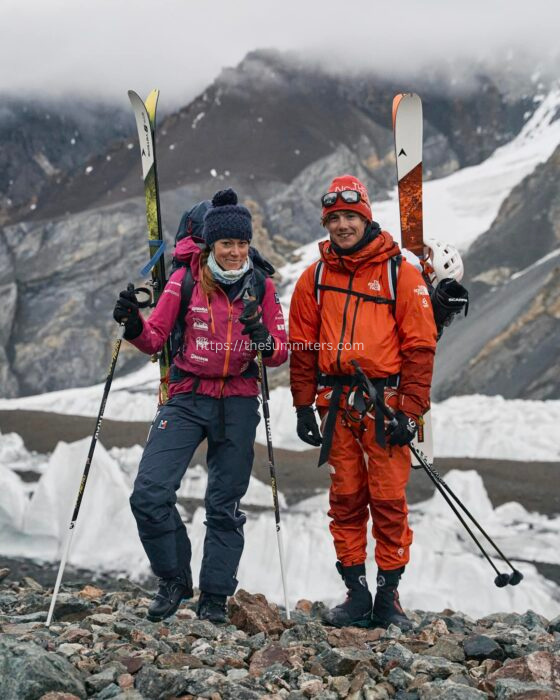
The latest update from the team responsible for fixing ropes confirms that the route is clear all the way up to Camp 3.
Meanwhile, Oswald Pereira and Bartek Ziemski are currently making their way up Makalu, where teams are acclimatizing between Camps 2 and 3. Progress is a bit slower on Kangchenjunga due to the longer route and fewer climbers on the mountain. Nonetheless, the 8K Expeditions team, in charge of fixing ropes, reports reaching Camp 3, marking the halfway point to the summit.